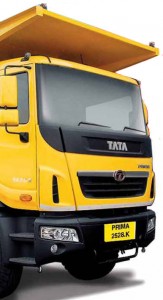
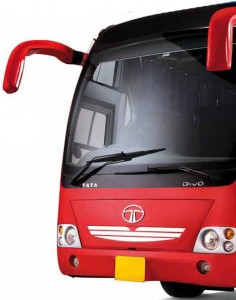 The year 2011-12 proved a mixed bag for Tata Motors. The company retained its market leadership in commercial vehicles and gained further market strength through the highly successful Ace and Magic, its new line of light pick-up trucks. On the other hand, passenger car sales were below expectations, even though sales of the Nano increased over the previous year.
The year 2011-12 proved a mixed bag for Tata Motors. The company retained its market leadership in commercial vehicles and gained further market strength through the highly successful Ace and Magic, its new line of light pick-up trucks. On the other hand, passenger car sales were below expectations, even though sales of the Nano increased over the previous year.
Says Mr. Ratan N. Tata, Chairman: “Tata Motors will strive to retain its market prominence domestically and internationally and will continue to be a responsible corporate citizen wherever it operates and do the right thing for all its stakeholders and the communities which it serves.”
The automobile sector impacts the lives of millions worldwide. It creates a huge number of direct and indirect jobs and drives the quest for new technologies, lighter, stronger materials as well as new processes and business models. It has resulted in some of the most important infrastructure investments in many countries – highway systems which connect cities, connect production centers to markets and rural areas, and connect communities separated by water and mountains through bridges and tunnels. While commercial vehicles constitute one of the main forms of competitive goods transport, based on a business proposition, the passenger car is probably one of the most emotive products in the world today.
Despite the much greater interest in performance, advanced tec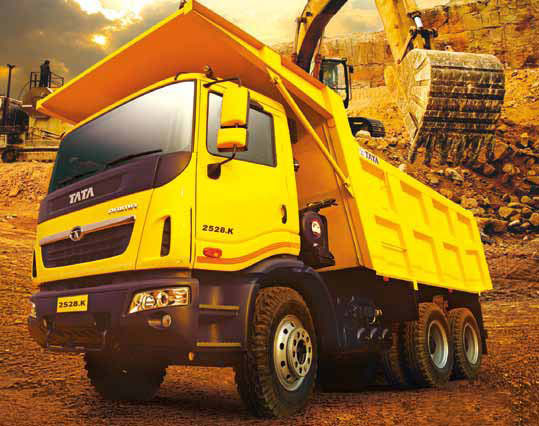 hnology and reliability, the acquisition of a car continues to have an important element of emotional buyer attraction based on design, style and visual appeal which results in a sale.
hnology and reliability, the acquisition of a car continues to have an important element of emotional buyer attraction based on design, style and visual appeal which results in a sale.
In the coming years, Tata Motors’ dominance in commercial vehicles will be challenged by international brands like Mercedes-Benz, Volvo and Navistar which have already entered or in the process of entering the Indian market. A new line of very competitive, fuel-efficient vehicles is being developed by Tata Motors to meet the competition head-on. In passenger cars, the company will face even greater competition from the many automotive brands that are in the country. Of course, it has to address the marketplace more effectively with its existing and future products in order to regain the level of market share that it earlier enjoyed.
The automotive industry has been, and probably will always be a barometer of the economic health of a nation and remains a symbol of its prosperity. It will play an important role in the development of India. It will strive to retain its market prominence domestically and internationally and will continue to be a responsible corporate citizen wherever it operates and do the right thing for all its stakeholders and the communities which it serves.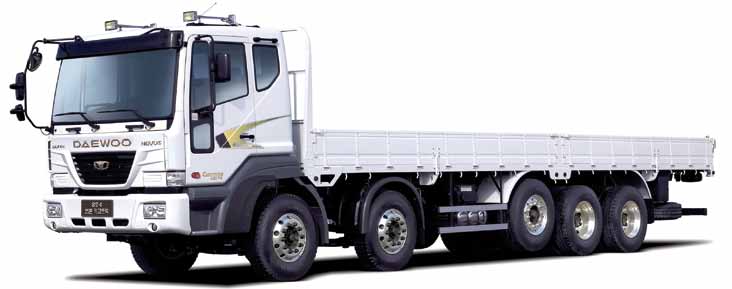
The Tata Motors Group sales stood at 12,69,483 vehicles in 2011-12, higher by 17.7 per cent over the previous year. Global sales of all commercial vehicles were at 5,99,913 units, while global sales of all passenger vehicles were at 6,69,507 units.
The company recorded sales of 8,63,248 vehicles, a growth of 10.9 per cent over the previous year in the Indian domestic market. With the industry growing at a moderate 7.2 per cent, the improved sales resulted in an increase in the company’s market share from 24.3 per cent to 25.2 per cent, in the Indian industry. The company exported 63,105 vehicles from India against 58,089 vehicles the previous year.
Commercial vehicles
Within the domestic market, Tata Motors continued to strengthen its presence in commercial vehicles, with sales of 5,30,204 units, growing 15.7 per cent over from the previous year – an all-time high for the company. This represented a market leadership share of 59.4 per cent in the domestic CV market.
Sales in the M&HCVs segment grew moderately at 5.3 per cent. Volumes at 2,07,086 units reflected a market share of 59.4 per cent. This segment also saw the entry of new players, which put pressure on the market share. However, sales of the Tata Prima, the next generation truck, continued to grow. A much sharper focus on network development and customer initiatives laid the foundation for future growth in M&HCVs.
Passenger vehicles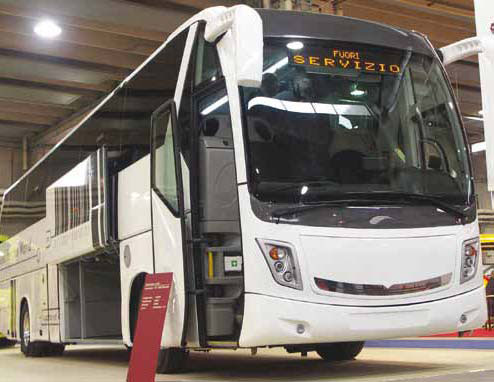
In a year where the domestic car industry grew only by 3.6 per cent, Tata Motors sales of passenger vehicles in the domestic market (inclusive of Tata, Fiat and Jaguar Land Rover brands) was at its highest ever of 333,044 units, representing a growth of four per cent over that of the previous year. In an intensely competitive passenger vehicles market, a market share at 13.1 per cent was the same as the previous year.
Exports
Focused efforts in select ASEAN and Africa markets helped international exports from India grow by 8.6 per cent to 63,105 units in the fiscal year. The company exported 55,079 commercial vehicles and 8,026 passenger vehicles, a growth of 9.6 per cent and 2.3 per cent respectively over the previous year. A CKD plant was set up in South Africa for assembly of commercial vehicles. Another plant is being set up in Indonesia which is expected to start operations next year. The company continues to have a special focus on expanding its global footprint and is targeting product actions specifically to cater to international geographies.
Sales of Tata Daewoo Commercial Vehicle Company (TDCV) at 9,531 units were higher by nine per cent over the previous year. Tata Daewoo Sales company, which was established in FY 2010-11 to distribute TDCV products, has stabilized its operation during the year, enabling TDCV to focus on key accounts and fleet customers.
Tata Hispano Motors Carrocera, S.A. (Tata Hispano) was seriously affected by the economic downturn in Europe, particularly in Spain. Sales for 2011-12 were at 368 units, down by 27 per cent from the previous year. Tata Hispano successfully executed a prestigious CNG series hybrid low floor bus order for EMT Madrid during the year, demonstrating its technological capability. The company made a provision for investments in Tata Hispano, arising from continuous under-performance in challenging market conditions.
Tata Motors (Thailand) Ltd. (TMTL) was affected by floods in Thailand during the year, which negatively impacted supply chain partners and the overall demand scenario there. As a result, volumes of TMTL at 4,978 units in 2011-12 were down by 17.5 per cent from the previous. TMTL launched TDCV CNG tractors and Super Ace to boost volumes. The Nano, also being tested for sale in Thailand, has a potential to boost volumes.
Tata Motors (SA) (Proprietary) Ltd. launched the Prima range of trucks in South Africa alongwith the TDCV range of tractor trailers and the Indigo Manza at the Johannesburg Motor Show with a view to increasing the product offerings in that country.
Commercial vehicle segment
During the year, the domestic commercial vehicle market recorded a growth of 19.2 per cent with the highest ever sales of 892,349 vehicles. The medium and heavy commercial vehicles (M&HCV) segment grew by 6.5 per cent, while growth of the light commercial vehicle (LCV) segment was at 29.1 per cent. The lower growth in agriculture, manufacturing and construction sectors mainly contributed to lower growth in the commercial vehicle segment at 19.2 per cent as compared to 27.3 per cent in 2010-11. Further, M&HCV demand was mainly affected by higher interest rates and restricted financing due to tight RBI monetary policy.
The company’s sale of commercial vehicles in the domestic and international markets 2011-12 was 585,283 units, representing a growth of 15.1 per cent over the previous year. The growth was driven by focused product actions, enhancement of quality service network, expanded service outlets and financing options suited to customer needs.
The LCV segment continued to drive growth for the company whose sales increased by 23.5 per cent to 323,118 units from 261,637 units in 2010-11, thanks to improved performance in the pick-up segment and ramp-up of production at the Pantnagar plant. Commercial production has commenced at Dharwad. The major launches in 2011-12 were the Ace Zip and Magic Iris. Uptrend in the Tata Ace sales continued.
However, the entry of new players in the small commercial vehicle category and the expanding market size in this segment resulted in lowering of the company’s market share in the LCV segment to 59.4 per cent in 2011-12 from 62.1 per cent in 2010-11. In the M&HCV category, the company sold 207,086 units during 2011-12, marking a market share of 59.4 per cent. The economic crisis in the Euro Zone and political unrest in the Middle East led to a global slowdown. The real GDP growth in the Euro Zone dropped successively in every quarter of the year. The SAARC and ASEAN countries, however, continued to grow steadily. In particular, the growth in the small commercial vehicle segment in these geographies was robust. The new launches during the year included the Tata Divo, a super-luxury inter-city bus, and new variants in the Tata Starbus Ultra range.
Stiff competition ahead
The company faces competition from various domestic and foreign automotive manufacturers in the Indian automotive market. Improving infrastructure and robust growth prospects compared to other mature markets are now attracting a number of automotive OEMs to India. These companies have either formed joint-ventures with local partners or have established own operations in India. The global competitors bring international experience, global scale, advanced technology and significant financial support, for the operations in India. The competition is likely to further intensify in the future.
The company has designed its products to suit the requirements of the Indian market based on specific customer needs such as safety, driving comfort, fuel efficiency and durability. The company believes that its vehicles are suited to Indian roads and climate and comply with the current environmental regulations in force. The company also offers a wide range of optional configurations to meet the specific needs of its customers. It is also developing products to strengthen its product portfolio in order to meet customer expectations.
Indian market outlook
The Indian economy is likely to grow moderately at 7.6 per cent. Input costs continue to remain under pressure from increasing commodity prices. With higher intensity in the competitive scenario, pricing power remains limited and margins are likely to be under pressure. Against this backdrop, Tata Motors will continue to focus on providing new products and solutions to the customer with a view to reducing the total cost of ownership. Along with initial acquisition price, the focus would be on improving fuel efficiency and reducing maintenance costs of vehicles.
With a view to maintaining its advantage of reach and penetration, the company will also expand its sales and service network with its focus on upcountry markets. Aggressive cost reduction continues to be a focus area to offset the increased input costs and continuously improve margins. The company is also actively pursuing opportunities in international markets, including the possibility of CKD and SKD assembly to offset high import costs.
The global scenario
The European economy continues to struggle, with austerity measures in place in a number of countries. The economic situation and recent national election results continue to create uncertainty around European zone stability, the Euro and borrowing costs. Credit continues to be difficult to obtain for customers and the outlook remains volatile.
Initial figures suggest that the UK economy has re-entered recession in the last three months. Trading conditions in the UK remain difficult. The US economy has recovered as compared to other mature economies since the economic downturn, with GDP growth and falling unemployment, although the position remains fragile. The Chinese economy continued to grow strongly throughout 2011-12. Its growth is likely to slow in future, although it may remain above eight per cent.
Japan, Australia and New Zealand in the Asia Pacific region were less affected by the economic crisis compared to Western economies, and are recovering a little faster, often due to increased trade with China and other growth economies.
The major constituents in other markets are Russia, South Africa and Brazil, alongside the rest of Africa and South America. These economies were not as badly affected by the economic crisis as the Western economies and have continued their GDP growth in the last few years, partly on the back of increased commodity and oil prices.
Tata Motors has been the top Indian automotive player over the last few decades. The commercial vehicle segment has seen the company battle it out with only a few competitors, a scenario which is fast changing with the entry of big global names. As competition gets more intense, Tata Motors is really aggressive in its approach to maintain its markethold.